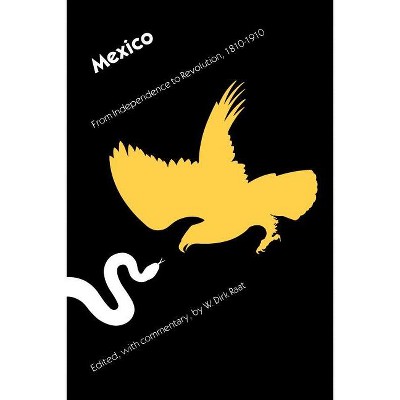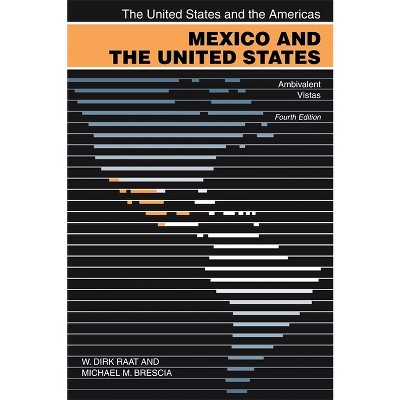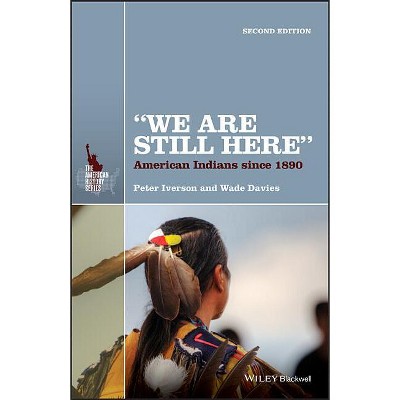About this item
Highlights
- A comparative history of the relocation and removal of indigenous societies in the Greater American Southwest during the mid-nineteenth century Lost Worlds of 1863: Relocation and Removal of American Indians in the Central Rockies and the Greater Southwest offers a unique comparative narrative approach to the diaspora experiences of the Apaches, O'odham and Yaqui in Arizona and Sonora, the Navajo and Yavapai in Arizona, the Shoshone of Utah, the Utes of Colorado, the Northern Paiutes of Nevada and California, and other indigenous communities in the region.
- About the Author: W. Dirk Raat is Professor Emeritus, State University of New York (SUNY) Fredonia, New York, and Professor Emeritus, Arizona State University, Tempe, Arizona.
- 400 Pages
- History, Native American
Description
About the Book
"This is a history about the relationship between what Apache patriarch Ace Dalugie called the Pale Eyes and their opposite numbers, the "redskins" as the Pale Eyes derisively called them. Whites or Pale Eyes usually had a skin color that was not white but flesh colored or a light brownish pink color. As for the "redskins," they were seldom only red but ranged in skin color from a dull yellowish brown (khaki) or a light grayish brown (beige) to bronze and reddish-brown. Only the caste system the whites brought with them dictated a false dichotomy between being "white" and "red," with the "redskins" being assigned the external and subordinate role that racism and casteism required. The history of the Greater Southwest is one in which "whites" maintained the illusion of their superiority by dehumanizing indigenous peoples. As social and cultural historian Gary Michael Tartakov noted, "It [they] dehumanized others to build its [their] own civilization." The relationship between "whites" and "redskins" involved a more diverse group than even Dalugie noted. Prior to and after the Civil War many blacks and ex-slaves came west as cowboys, miners, and soldiers, as did Chinese workers, as well as mulattos and indios from the southern and eastern states (not to mention those individuals who were African-Native Americans). The diversity involved members of both sexes, including females as mothers (including single, divorced, and widowed), pioneers, farmers, cowgirls and ranchers, prostitutes, housekeepers, property owners, entrepreneurs, headwomen, scouts, homesteaders, educators, and warriors. In any case, these were the antagonists that were involved in a major drama of the nineteenth century, the relocation and removal of indigenous societies in the Greater American Southwest. The book is entitled Lost Worlds of 1863 and the drama of relocation centers around that pivotal date in western history"--Book Synopsis
A comparative history of the relocation and removal of indigenous societies in the Greater American Southwest during the mid-nineteenth century
Lost Worlds of 1863: Relocation and Removal of American Indians in the Central Rockies and the Greater Southwest offers a unique comparative narrative approach to the diaspora experiences of the Apaches, O'odham and Yaqui in Arizona and Sonora, the Navajo and Yavapai in Arizona, the Shoshone of Utah, the Utes of Colorado, the Northern Paiutes of Nevada and California, and other indigenous communities in the region. Focusing on the events of the year 1863, W. Dirk Raat provides an in-depth examination of the mid-nineteenth century genocide and devastation of the American Indian.
Addressing the loss of both the identity and the sacred landscape of indigenous peoples, the author compares various kinds of relocation between different indigenous groups ranging from the removal and assimilation policies of the United States government regarding the Navajo and Paiute people, to the outright massacre and extermination of the Bear River Shoshone. The book is organized around detailed individual case studies that include extensive histories of the pre-contact, Spanish, and Mexican worlds that created the context for the pivotal events of 1863. This important volume:
- Narrates the history of Indian communities such as the Yavapai, Apache, O'odham, and Navajo both before and after 1863
- Addresses how the American Indian has been able to survive genocide, and in some cases thrive in the present day
- Discusses topics including Indian slavery and Lincoln's Emancipation Proclamation, the Yaqui deportation, Apache prisoners of war, and Great Basin tribal politics
- Explores Indian ceremonial rites and belief systems to illustrate the relationship between sacred landscapes and personal identity
- Features sub-chapters on topics such as the Hopi-Navajo land controversy and Native American boarding schools
- Includes numerous maps and illustrations, contextualizing the content for readers
Lost Worlds of 1863: Relocation and Removal of American Indians in the Central Rockies and the Greater Southwest is essential reading for academics, students, and general readers with interest in Western history, Native American history, and the history of Indian-White relations in the United States and Mexico.
From the Back Cover
An in-depth examination of the mid-nineteenth century devastation of American Indian communities including the Yavapai, Apache, O'odham, and Navajo
In Lost Worlds of 1863, historian W. Dirk Raat examines the relocation and removal of indigenous societies in the Greater American Southwest. Presenting a unique comparative narrative approach, the author addresses the diaspora experiences of a variety of indigenous communities, including the Shoshone of Utah, the Utes of Colorado, the Northern Paiutes of Nevada and California, and the Apache, Yaqui and Navajo in Arizona and Sonora.
Focusing on the events of 1863, a pivotal year in Native American history that exemplifies the turbulent history of Indian-White relations, the author compares various kinds of relocation between different indigenous groups ranging from the removal and assimilation policies of the United States government regarding the Navajo and Paiute people, to the wholesale extermination of the Shoshone in the Bear River Massacre. In-depth case studies explore Indian ceremonial rites and belief systems to illustrate the relationship between the sacred landscapes and personal identity of native peoples, and provide extensive histories of the pre-contact, Spanish, and Mexican worlds that created the context for the events before, during, and after 1863.
Lost Worlds of 1863: Relocation and Removal of American Indians in the Central Rockies and the Greater Southwest is a must-have book for all readers with interest in Western and Native American history.
Review Quotes
"This book would be particularly useful to undergraduates seeking an introduction to the field of Indigenous studies, genocide studies, or western history."
--Journal of Arizona History, Volume 64, Number 4, Winter 2023
About the Author
W. Dirk Raat is Professor Emeritus, State University of New York (SUNY) Fredonia, New York, and Professor Emeritus, Arizona State University, Tempe, Arizona. He has taught Mexican, Latin American, and Indigenous history for 34 years, and has published eight books and numerous articles and essays on the history of Mexico and Mexico-U.S. relations.












